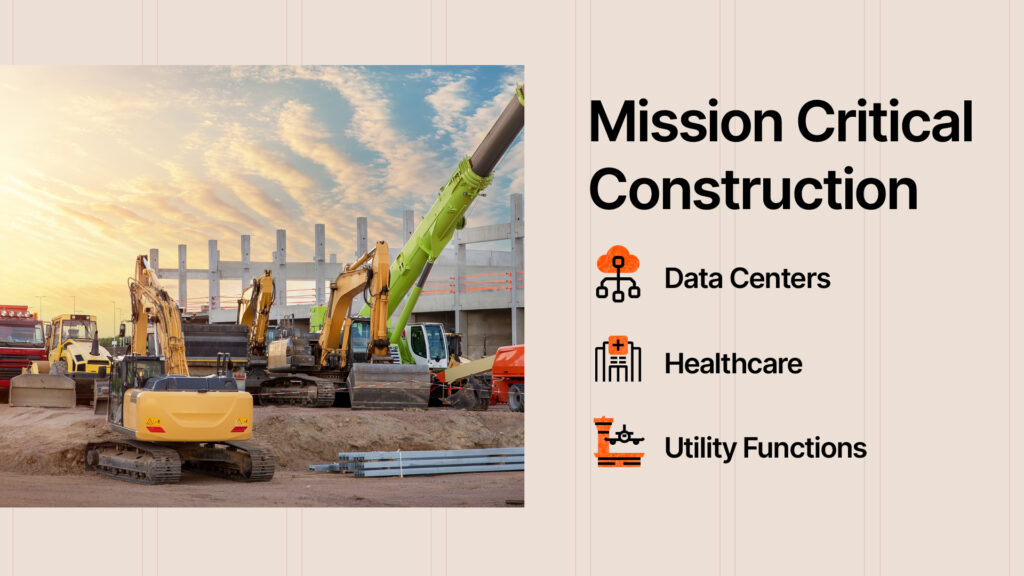— 10 min read
ADA in Construction: Building Universal Accessibility
Last Updated Aug 13, 2024
Last Updated Aug 13, 2024

The Americans with Disabilities Act (ADA) represents a significant milestone in ensuring universal accessibility in public spaces. Within the construction industry, ADA compliance is not merely a recommendation but a stringent requirement, shaping the way architects and builders approach both the design and construction of new and renovated spaces. Ensuring that every aspect of a physical structure adheres to ADA standards is crucial to avoid legal ramifications and promote inclusivity and accessibility in our built environment.
ADA compliance in construction involves a meticulous blend of planning, design and execution to create environments that are usable by everyone. Each step requires careful consideration to meet these federally-mandated standards, from the initial design sketches to the final construction details.
This article will explore how ADA compliance is integrated into construction projects, the roles of various professionals in maintaining standards and the challenges and solutions that arise in the pursuit of creating accessible and inclusive spaces.
Table of contents
Understanding ADA in Construction
The Americans with Disabilities Act (ADA), enacted in 1990, is a landmark civil rights law that prohibits discrimination based on disability. It sets forth measurable standards that ensure accessibility, reflecting decades of advocacy by the disability community for equal access to public spaces. This legislation establishes clear and quantifiable guidelines, not only shaping specific projects but also broadly influencing the construction industry as a whole.
These standards serve as a national baseline that all projects must meet. By providing clear and precise standards, the ADA directs the creation of environments that everyone can access and use independently and safely.
By establishing comprehensive guidelines, the ADA ensures that accessibility is considered right from the inception of a project, affecting decisions related to layout, design, and minimum standards.
ADA standards help create predictable and consistent user experiences across all new buildings and major renovations, regardless of their location or purpose. This consistency is vital for the usability of spaces, as it ensures that people with disabilities can expect the same level of access in any public or private building they enter.
Furthermore, adherence to ADA standards helps mitigate the risk of costly legal challenges that can arise from non-compliance. By ensuring that projects conform to these guidelines from the outset, companies can avoid the significant expenses and reputational damage associated with litigation. Furthermore, proactive compliance fosters a positive public image and trust, demonstrating a commitment to accessibility and equality.
The Role of Design and Construction Professionals in ADA
The integration of the ADA standards into architectural designs sets the stage for the entire construction process, ensuring that accessibility is a core component from start to finish. This early inclusion meets regulatory requirements and streamlines the construction workflow, preventing costly and complex modifications that may arise when ADA considerations are deferred to later stages.
Early Integration of ADA Guidelines
Architects must strategically embed ADA standards from in early design stages. This approach ensures that accessibility features such as ramps, wide doorways, turnarounds, and adequate elevator access are incorporated organically into the building's layout.
By addressing these elements early, architects can design more effectively, creating spaces that are inherently accessible and avoid the need for later adjustments that can disrupt construction timelines and budgets.
Responsibilities of Architects and Contractors
The responsibility for ADA compliance begins with architects but extends significantly to contractors. Architects are tasked with creating designs that adhere to ADA standards, integrating accessibility seamlessly into the aesthetic and functional aspects of the building.
Once the design is set, contractors take on the critical role of executing these plans accurately. Contractors straying from the construction drawings could lead to the failure of meeting ADA standards. Conversely, contractors can potentially save their clients time and money if they’re able to catch unmet ADA standards in the drawings – so it may be good practice for contractors to learn ADA standards.
Challenges and Considerations in ADA Compliance
Ensuring compliance with the Americans with Disabilities Act involves navigating a range of challenges that vary significantly depending on the type of construction and the specific requirements of the building usage.
Bathroom Design
Bathroom design represents a particularly complex challenge in ADA compliance, given the myriad of detailed requirements that must be managed within the confines of a typically small space. The placement of grab bars, the height of fixtures, the space required for maneuvering wheelchairs and access to amenities like sinks and dispensers all must adhere to strict specifications.
Errors in any of these areas can render a facility non-compliant, leading to costly redesigns and modifications. The precision required in bathroom design exemplifies the meticulous attention to detail necessary throughout the design and construction process to meet ADA standards.
Ramp Installation
Ramp installation presents its own set of challenges, particularly in terms of slope and landing integration. The ADA specifies that ramps must have a slope of 1:12, meaning for every inch of height, a foot of ramp is required.
Additionally, ramps must have level landings at both the top and bottom, as well as at intervals throughout their length, to provide rest and maneuvering spaces. Designing ramps that are both functional and aesthetically pleasing, especially in environments with limited space or unique architectural features, requires innovative thinking and careful planning.
Nuanced Requirements Based on Building Type and Usage
Different construction project types and intended uses dictate specific ADA compliance strategies. New buildings are expected to integrate ADA considerations right from the design phase, whereas renovations may focus more on modifying existing structures to achieve compliance. Historical buildings often require creative solutions to balance accessibility with the preservation of architectural integrity.
In environments with high public usage, the risk of litigation underscores the critical need for strict adherence to ADA standards. Rigorous compliance is essential to avoid legal challenges and guarantee safety and accessibility for all users.
Throughout all these considerations, the collaboration between architects, planners, engineers and contractors is crucial. The entire project team must work together closely to ensure that every aspect of a building's design and construction meets or exceeds ADA requirements, creating spaces that are not only compliant but also welcoming and accessible to all. This holistic approach is essential for fostering inclusive environments in our communities.
Specific Considerations for Commercial Buildings
Commercial buildings often see significant public use and face stringent ADA compliance requirements. Accessibility must be a primary consideration in every aspect of their design and operational functionality:
- Entrances and pathways: Doorways must be wide enough to accommodate wheelchair access and pathways must be clear of any obstructions that could impede mobility.
- Parking and transportation: Adequate accessible parking spaces must be provided and their design must facilitate easy access to the main building. Public transport access points, if applicable, also need to meet specific accessibility standards.
- Internal navigation: Elevators, stairs and internal ramps must be designed to accommodate high traffic volumes and diverse user needs, ensuring that all public areas are accessible to everyone.
- Varied usage requirements: The nature of the commercial space influences specific ADA considerations. Retail spaces, for instance, require accessible routes that navigate between displays and shelves, while office buildings must ensure that all workspaces and common areas like break rooms are fully accessible.
Compliance and Legal Aspects
Compliance with ADA standards is not only a moral and ethical imperative but also a legal requirement. Non-compliance can lead to significant legal implications, including litigation, which can result in hefty fines and damage to a firm’s reputation. Understanding these aspects and employing strategic measures is crucial for all involved in building design and construction.
Legal Implications of Non-Compliance
Failure to adhere to ADA standards can expose building owners, architects and contractors to lawsuits and substantial penalties. Such legal actions can stem from individuals who encounter barriers that affect their ability to access or navigate public spaces. The consequences of such litigation can extend beyond financial penalties to include mandatory corrective measures, which can be extremely costly and disruptive to implement after construction is completed.
The Role of ADA Consultants
Given the complexities of ADA compliance, many projects benefit from the specialized knowledge of ADA consultants, especially on public projects. These experts ensure that the design and implementation of construction projects meet all necessary accessibility standards. ADA consultants play a critical role in reviewing construction drawings, inspecting completed projects and advising during construction to prevent potential non-compliance issues. Their expertise helps mitigate the risk of oversight that could lead to non-compliance and subsequent legal action.
ADA Best Practices and Compliance Strategies
Maintaining compliance with ADA throughout the construction process demands a proactive approach. Implementing systematic best practices and compliance strategies is crucial for ensuring all building aspects meet ADA standards. Effective ADA compliance is achieved through a combination of thorough oversight, expert guidance and rigorous project management practices.
Conduct Regular Reviews
Regular reviews are essential at various stages of construction to ensure ongoing compliance with ADA standards. These should be strategically scheduled at critical milestones—such as after the completion of foundational work, framing and before final finishes are applied—to ensure that the construction adheres to approved plans. Special attention should be paid to areas prone to deviations such as ramp slopes and doorway widths. Early detection of non-compliance can prevent costly rework, underscoring the importance of these periodic assessments.
Utilize Specialized Consultants
Involving ADA consultants can significantly bolster a project’s adherence to compliance standards. These experts bring specialized knowledge of ADA requirements, offering valuable insights that can preempt potential oversights by the design and construction teams. Their expertise is especially crucial in projects with high public interaction, where the risk of litigation for non-compliance is increased. For projects with historical non-compliance issues or complex accessibility challenges, the proactive engagement of ADA consultants can provide a critical safeguard.
Integrate Compliance Checks into Project Management Practices
Embedding ADA compliance checks into the project management process ensures that accessibility remains a central focus throughout all phases of construction. This can be achieved by defining compliance milestones within the project timeline and assigning dedicated team members to oversee these elements. Emphasizing a collaborative approach, where the responsibility for meeting ADA standards is shared among the entire team rather than focused onto a single individual, helps cultivate a comprehensive understanding of these requirements and fosters a more effective compliance environment.
Additionally, the utilization of advanced planning tools such as Building Information Modeling (BIM) can be instrumental. These tools help visualize potential compliance issues before construction begins, allowing for adjustments in the design phase that can prevent future accessibility barriers.
By embracing these best practices — conducting meticulous reviews, consulting with ADA experts and integrating systematic compliance checks — construction projects can more effectively meet ADA standards. This not only minimizes the risk of legal and financial repercussions but also ensures that the built environments are accessible and inclusive for all users.
Shared Responsibility: Collaborating to Achieve ADA Standards
The construction industry is pivotal in shaping accessible environments, playing a crucial role in societal inclusion. Achieving ADA compliance is a collective endeavor that requires the concerted effort of the entire project team, from the initial design phase to the final construction details.
As methodologies and technologies advance, it becomes essential for teams to adopt a comprehensive and integrated approach to ADA compliance. For larger projects, consider budgeting for the proper training on ADA standards, including new hire training and consistent “lunch and learn” sessions for both construction and design teams. By embracing collaborative tools and strategies throughout the development process, the industry can ensure that accessibility is not just an afterthought but a fundamental aspect of every project. This commitment to teamwork and shared responsibility is key to building spaces that are not only compliant but truly accessible and welcoming to everyone.
Was this article helpful?
Thank you for your submission.
0%
0%
You voted that this article was . Was this a mistake? If so, change your vote here.
Scroll less, learn more about construction.
Subscribe to The Blueprint, Procore’s construction newsletter, to get content from industry experts delivered straight to your inbox.
By clicking this button, you agree to our Privacy Notice and Terms of Service.
Categories:
Tags:
Written by
Adrian Godby
Adrian Godby is a Senior Product Manager at Procore with 10 years of experience working in the construction industry. Previously, Adrian worked as a project engineer at both Skanska and Robbins Reed. He holds both a Bachelor of Architecture (B.Arch.) degree and a B.S. Construction Management degree, focused in Design-Build, from California Polytechnic State University-San Luis Obispo.
View profileTaylor Riso
73 articles
Taylor Riso is a marketing professional with more than 10 years of experience in the construction industry. Skilled in content development and marketing strategies, she leverages her diverse experience to help professionals in the built environment. She currently resides in Portland, Oregon.
View profileExplore more helpful resources

Tackling the Top 10 Construction Industry Issues
The construction industry is constantly evolving, bringing both opportunities and challenges. Companies must navigate an array of construction industry issues — from workforce shortages to integrating new technologies into their...

Mission Critical Construction: Strategies for Success
Mission critical construction involves building structures whose functions cannot afford to fail, as any disruptions can lead to significant consequences for society. Keeping data centers, hospitals, power plants and other...

Modular Construction and MEP: A Collaborative Pairing
In an age of supply chain disruptions, workforce shortages, and rising material costs, off-site construction — including modular construction methods and prefabricated materials — is surfacing as a multipurpose solution....

Connected Construction: Transforming the Industry Through Integration
Construction projects are becoming increasingly complex, so companies need to innovate to accurately and profitably complete these modern structures. Connected construction — using technology and data to improve communication, processes...